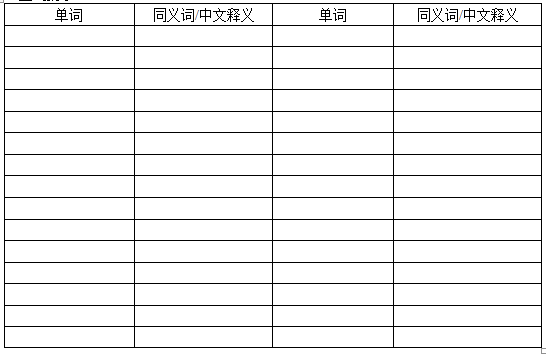托福阅读常考话题及练习题推荐三:恐龙大灭绝(1)
1托福阅读常考话题-恐龙大灭绝
Passage 3
Determining Dinosaur Diet
Determining what extinct dinosaurs ate is difficult, but we can infer some aspects of their dietary preferences. Traditionally, this information has been derived from direct evidence, such as stomach contents, and indirect evidence, such as establishing a correlation between particular body characteristics and diets of living animals and then inferring habits for dinosaurs.
Animals such as house cats and dogs have large, stabbing canine teeth at the front of the mouth and smaller, equally sharp teeth farther back in their jaws. Many of these animals are also armed with sharp claws. The advantage of teeth and claws as predatory tools is obvious. Now consider animals like cows, horses, rabbits, and mice. These animals have flat teeth at the back of the jaw that are analogous to and have the same function as grindstones. Unlike the meat-slicing and stabbing teeth of carnivores, the teeth of these animals grind and shred plant material before digestion.
More clues exist in other parts of the skull. The jaw joint of carnivores such as dogs and cats has the mechanical advantage of being at the same level as the tooth row, allowing the jaws to close with tremendous speed and forcing the upper teeth to occlude against the lower teeth with great precision. In herbivorous animals, rapid jaw closure is less important. Because the flat teeth of herbivores work like grindstones, however, the jaws mush move both side to side and front to back. The jaw joints of many advanced herbivores, such as cows, lie at a different level than the tooth row, allowing transverse tearing, shredding, and compression of plant material. If we extend such observations to extinct dinosaurs, we can infer dietary preferences (such as carnivory and herbivory), even though we cannot determine the exact diet. The duck-billed dinosaurs known as hadrosaurs are a good example of a group whose jaw joint is below the level of the tooth row, which probably helped them grind up tough, fibrous vegetation.
Paleontologists would like to be much more specific about a dinosaur's diet than simply differentiating carnivore from herbivore. This finer level of resolution requires direct fossil evidence of dinosaur meals. Stomach contents are only rarely preserved, but when present, allow us to determine exactly what these animals were eating.
In the stomach contents of specimens of Coelophysis (a small, long-necked dinosaur) are bones from juvenile animals of the same species. At one time, these were thought to represent embryonic animals, suggesting that this small dinosaur gave birth to live young rather than laying eggs. Further research indicated that the small dinosaurs were too large and too well developed to be prehatchling young. In addition, the juveniles inside the body cavity were of different sizes. All the evidence points to the conclusion that these are the remains of prey items and that, as an adult, Coelophysis was at least in part a cannibal.
Fossilized stomach contents are not restricted to carnivorous dinosaurs. In a few rare cases, most of them “mummies” (unusually well preserved specimens), fossilized plant remains have been found inside the body cavity of hadrosaurs. Some paleontologists have argued that these represent stream accumulations rather than final meals. The best known of these cases is the second Edmontosaurus mummy collected by the Sternbergs. In the chest cavity of this specimen, which is housed in the Senckenberg Museum in Germany, are the fossil remains of conifer needles, twigs, seeds, and fruits. Similar finds in Corythosaurus specimens from Alberta, Canada, have also been reported, indicating that at least two kinds of Late Cretaceous hadrosaurs fed on the sorts of tress that are common in today's boreal woodlands.
A second form of direct evidence comes from coprolites (fossilized bodily waste). Several dinosaur fossil localities preserve coprolites. Coprolites yield unequivocal evidence about the dietary habits of dinosaurs. Many parts of plants and animals are extremely resistant to the digestive systems of animals and pass completely through the body with little or no alteration. Study of coprolites has indicated that the diets of some herbivorous dinosaurs were relatively diverse, while other dinosaurs appear to have been specialists, feeding on particular types of plants. The problem with inferring diets from coprolites is the difficulty in accurately associating a particular coprolite with a specific dinosaur.
2托福阅读常考话题-恐龙大灭绝练习题
【段落主旨】
Paragraph 1:
Paragraph 2:
Paragraph 3:
Paragraph 4:
Paragraph 5:
Paragraph 6:
Paragraph 7:
【生词摘录】









